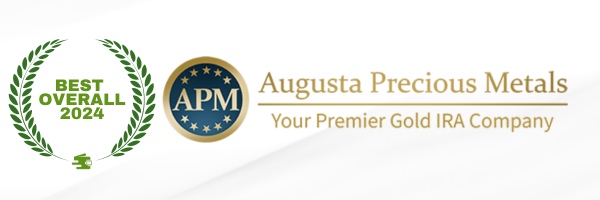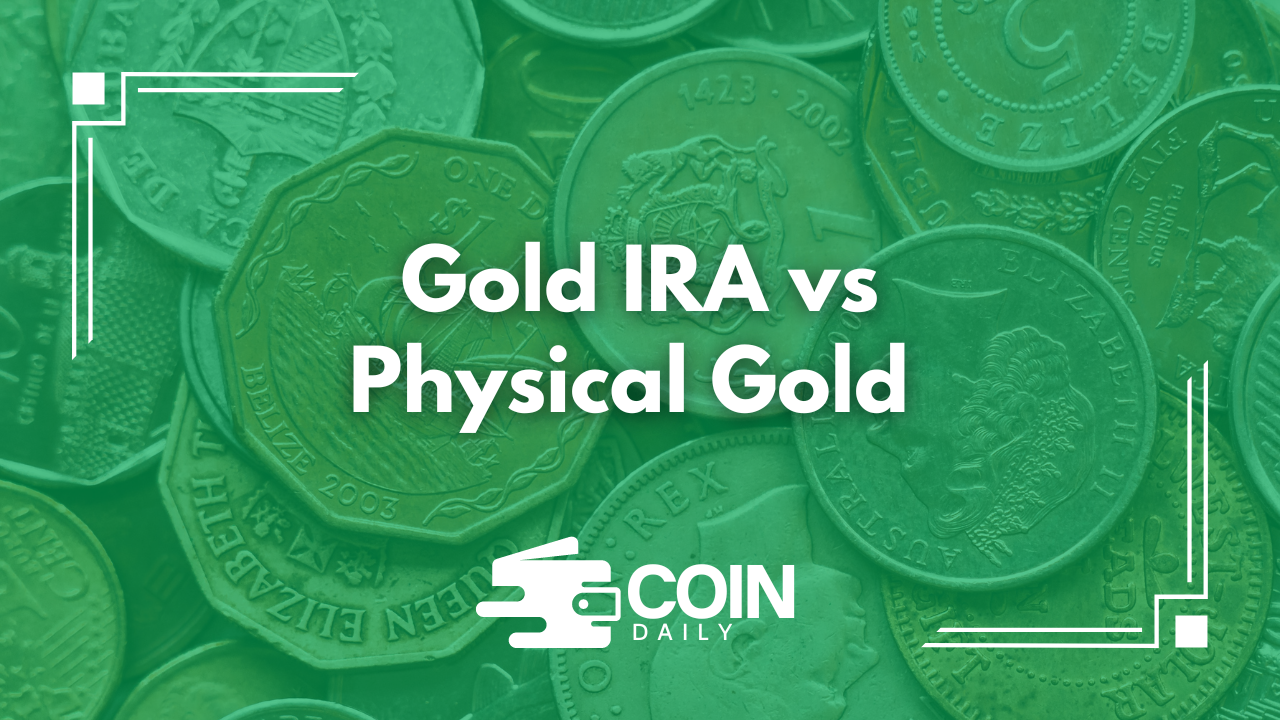People are becoming increasingly interested in obtaining gold. They are concerned about the economy and want to ensure that their money is safe in the event of another economic crisis similar to the one that occurred in 2008. Millions of people around the world share the age-old concern of protecting their riches. Investing in actual gold is a classic way to achieve this goal. However, as times have changed
, investing opportunities have multiplied. Gold IRA investments have developed as a popular way to secure your retirement. This raises the question of which strategy is best for investing in gold.
To be honest, no one investing option is ideal for everyone. Depending on your investing constraints and goals, either one may be a suitable alternative. This leaves us with only one choice for determining which is better: we must thoroughly examine both.
This post will go over all you need to know about these investment possibilities. Dive in to learn about the tax ramifications, storage limits, ownership flexibility, and other aspects of both physical and gold IRA investments.
What is a Gold IRA?
A gold IRA allows you to invest in physical gold as part of your retirement portfolio. When you reach 59 ½, you can start liquidating your physical gold investments. This is a great approach to safeguard your investments and ensure your financial future. Notably, this sort of IRA investment has the same tax advantages and is subject to the same IRS restrictions as traditional IRAs.

Now you may be wondering how to invest in a gold IRA. The technique is straightforward. Investing in a gold IRA through an IRS-approved custodian is the safest option. They help you stay in accordance with IRS requirements, assuring a safe investing journey.
Simply put, the custodian will handle everything, from starting your precious metals IRA account to aiding with investments in IRS-approved precious metals. Once you’ve purchased assets, the same custodian will assist you in transferring your precious metals to a secure third-party depository. This repository will hold your gold until you reach retirement age, at which point you will be able to take actual custody of it.
It is also vital to note that only certain precious metals qualify for gold IRA investing. This includes:
- 99.5 percent pure gold
- 99.9% pure silver
- 99.95% pure platinum
- 99.95% pure palladium
What is Physical Gold Investment?
Aside from the popular retirement investing choice, actual gold investment is the oldest method of owning gold. As the name implies, physical gold investment entails owning the gold you purchase. This could be coins, bars, or even jewelry. What is the best part? There are no limitations to this form of investment.
You can invest in any physical gold product and keep it for as long as you choose. Physical gold ownership, like gold IRAs, is subject to certain rules. Holding actual gold or silver is subject to capital gains tax. This tax is equal to your maximum marginal tax rate of 28 percent.
When it comes to buying real gold, you now have a variety of options, including gold dealers, pawn shops, rare coin stores, and even online investing platforms. Alternatively, you can buy physical gold from people who want to sell their gold assets.

The Investment Strategy
Struggling to decide between actual gold and gold IRA investments? This is a fantastic sign to implement a sound investment strategy. To assist you with this, consider some crucial aspects to include in your strategy to guarantee you make the best investment decision.
Diversity and Risk Tolerance
When picking between a real Gold IRA versus owning real gold, consider your risk tolerance. A Physical Gold IRA is a tax-advantaged retirement account that allows you to invest in gold-backed financial products. While it does not provide physical custody of the precious metal, it may carry less market risk than directly owning genuine gold.
Furthermore, physical gold is a real asset that is vulnerable to market fluctuations and the risk of theft or destruction because it is in your hands. Because both of these investments involve hazards, you must assess your risk tolerance level. Furthermore, the unique characteristics of these assets make them a great mix for diversifying your portfolio and balancing risks and benefits.
Short-term Goals vs. Long-term Objectives
When considering these options, keep your investment time horizon in mind. A physical gold IRA is typically suggested for long-term financial planning, especially retirement. It offers tax benefits and permits gold’s value to improve over time. In contrast, having genuine gold may be useful for short-term objectives or as a store of value, but it may incur higher transaction costs and demand secure storage, which has its own set of costs.
Is it Necessary to Choose One Option?
No, it is not! As previously stated, diversifying your portfolio with both of these investments will help you maintain your current and future financial security.
Historically seen as a safe-haven asset, gold can help diversify portfolios and serve as a hedge against economic turbulence. As a result, possessing it in both physical form and an IRA account can help you reduce your risk of loss while also providing short-term and long-term gold investment benefits.
Check Out the Best Gold IRA Company of 2024
There are over 200+ gold IRA companies in the US and among all of them, I believe Augusta Precious Metals is the best one so far.

Augusta Precious Metals ranks as the #1 gold IRA company in the US. And that’s for good reason.
They have some of the best product catalogs with gold, silver, platinum, and palladium products to offer. But the main highlight is their dedicated web conference and the added focus on client education.
Augusta has an A+ rating on BBB, 1000+ client testimonials, and has been awarded “Most Transparent Company” in 2023 by Investopedia.
No other company puts as much focus on educating their clients about the different aspects of gold IRAs as they do.
My own experience with them was amazing to say the least.
However, their minimum investment requirement is $50,000 which limits the number of people who can open a gold IRA with them. Still, if you have the budget, you shouldn’t look elsewhere.
Tax Implications
Tax ramifications are a crucial factor when making any form of gold investing decision. After all, you don’t want to be a defaulter while attempting to safeguard your money for the now and future. Speaking of which, both actual gold and precious metals IRAs have tax consequences. Before we delve into detail about these tax ramifications, here’s a quick explanation of IRS tax requirements for physical gold and gold IRAs:
| Investment Type | Tax Implications of Gold Investments |
|---|---|
| Gold IRA | If contributions to a typical IRA account are tax deductible, the amount of income taxed in that year decreases. However, distributions from a precious metals IRA are taxed like ordinary income. |
| Physical Gold | Short-term gains from physically owning precious metals are taxed at ordinary income levels. |
As stated in the table above, whether you choose a Roth or traditional gold IRA, your taxes will be decided by IRS laws. Importantly, both of these accounts allow you to increase your assets without making immediate tax payments. Traditional IRAs are funded before taxes, whereas Roth IRAs are funded after taxes. However, earnings from both types of IRAs are tax-free.
In comparison, real gold provides fewer tax benefits. The IRS considers gold to be a collectible, subject to the capital gains tax rate of no more than 28%. Additionally, while selling precious metals, you must comply with IRS reporting regulations. For example, reporting gold transactions frequently requires filing Form 1099-B with your taxes. A skilled tax counselor can help you better grasp IRS reporting standards.
It is worth mentioning that, depending on the jurisdiction and length of time the gold has been stored, the sale of real gold may be subject to capital gains tax. Again, it is best to consult a tax specialist to determine the tax consequences of actual gold assets under IRS laws.
Liquidity and Access
When comparing the liquidity of physical gold versus gold IRAs, physical gold remains liquid since it is recognized and valued globally. This implies that it is readily sold or traded, allowing for immediate revenue in times of need. The market value of physical gold, on the other hand, is determined by global demand and supply dynamics, making it susceptible to market fluctuations.
IRAs, on the other hand, are long-term investments that frequently include assets that will be held for years, if not decades. This implies that you cannot access or liquidate your gold in an IRA before reaching retirement age, making it less liquid than a real gold investment. However, it also means that when the gold you’ve been holding for years appreciates in value, you’ll be able to get more out of your investment.
How Do Early Withdrawals and Sales of Physical Gold and Gold IRAs Work?
Buying gold can serve as a reality check for investors regarding prices, and those who opt to sell may be startled by the rates provided. This is because the repurchase or bid price is typically less than the asking price. The spread, or the difference between the two, represents the seller’s first loss.
For example, if an investor pays US $2,022 for a 1-ounce Canadian Maple Leaf and then sells it the next day, the purchase price might be as low as US$1,952.
Furthermore, there are often additional fees involved with selling actual gold, such as shipping, insurance, and liquidation fees. However, if you still need to sell your real gold quickly, investigate gold purchasing businesses, which offer greater liquidity. It is crucial to remember that, due to the spread and associated purchase and selling costs, profiting from early sales of physical gold usually necessitates a large price change.
Early withdrawals and sales of gold from your IRA, on the other hand, incur a 10% penalty on the withdrawn amount/asset value. To avoid this, wait until you reach your retirement age, 59 ½, before withdrawing or liquidating a part of your assets in an IRA for distribution.
This not only protects the value of your physical gold until you reach retirement age, but it also allows you to benefit from gold’s increasing value over time. Speaking of actual gold, selling it early is the best strategy to profit from price increases for a set period of time.
Costs and Fees
Aside from the tax implications and liquidity of physical gold and gold IRAs, the prices and fees connected with each investment differ. Let us take a closer look at these discrepancies.
Gold IRA
When you open a gold IRA, your custodian may charge you a variety of costs, such as one-time account setup, annual asset maintenance, and storage fees. These costs are revealed by the IRA custodian you choose to invest with before you begin your gold IRA investment.
Physical Gold
Meanwhile, when you buy gold directly, you will not incur any additional fees on top of the transaction price. Storage is the most expensive aspect of real gold ownership. Storing it at home may appear to be cost-free, but we recommend
against relying completely on it. It’s a good investment as long as it’s secure. To ensure security, you may need to invest in a secure vault or safe at home, which will incur additional fees.
Alternatively, holding actual gold in a bank safe deposit box may incur storage fees. Unlike gold IRA investments, which contain protection, you should consider insurance for your physical assets, particularly if they are stored at home. Precious metals insurance coverage can be expensive, increasing your costs when you store physical gold at home.
Cost Comparison
If you’re still unsure which investment option is best for your budget, see the comparison below.
| Different Costs | Gold IRA | Physical Gold |
|---|---|---|
| Purchasing/Account Setup | Aside from the purchase price of precious metals, you must pay a one-time account setup fee. This cost might range from $50 to $150. | You must only pay the market price for the gold or other assets you intend to purchase. |
| Storage, Insurance, and Maintenance | You pay your storage depository a yearly fee to safely store, insure, and manage your assets, which might range from $200 to $500. This amount can vary depending on the gold IRA depository you choose. | Physical gold storage costs vary depending on the storage option, such as home storage, a secure vault, or a bank safe. While the cost of a home storage safe is fixed, the cost of storing a gold vault or a bank safe varies depending on the company/bank. In addition, insurance pricing for real gold varies depending on the insurance plan and the size/type of gold. For example, insurance for a $10,000 ring can cost between $100 and $200 each year. Some insurance coverage are more expensive. However, because insurance is critical if you choose to store your physical possessions at home, you should study all available insurance policies and select one that matches your needs. |
Additional fees may apply depending on the gold IRA custodian or physical gold provider you select.
Security and Storage
Another noteworthy distinction between real gold and gold IRAs is their security and storage. Let’s take a closer look at the security and storage factors below:
Gold IRA
As previously stated, you cannot physically possess the precious metals in your account if you invest in a gold IRA. Instead, choose a depository to store your gold investments. Storage and security are tightly intertwined. When you store your gold and precious metals in a reputable depository, you can be confident that they will be safe from theft and natural disasters – and that you will be paid the insured value if they are not.
The issue now is, “What makes these depositories so reliable?” Simply put, gold depositories are specialized storage facilities that provide a variety of security systems to protect your precious metals. This includes armed security, high-quality and active cameras, and temperature-controlled storage areas.
You can anticipate your gold IRA to be in excellent shape if you store it in such secure and IRS-approved depositories. This also implies that gold IRAs are a more secure investment than real gold in terms of storage.
Physical Gold
When you purchase gold, you gain complete control over its storage. This means you can keep the gold in a safe in your basement, a bank safe deposit box, or bury it in your grass. With immense power comes great responsibility.
So, when you purchase genuine gold, you accept responsibility for it and will bear the loss if it is destroyed, lost, or stolen. As a result, we recommend storing your actual gold at home in a safe and monitoring it with cameras.
Storing your real gold in a vault or bank safe is another secure alternative for reducing the danger of theft and loss. When examining these possibilities, choose the safest company/bank with a proven track record of protecting their clients’ assets. This manner, you may be confident that your physical gold is protected.
Flexibility and Control
Finally, think about the flexibility and control that your investment provides you. Having stated that, let us investigate the flexibility and controllability of physical gold and gold IRA investments.
Physical Gold
As previously said, actual gold investments allow you full possession of your assets. This makes such investments more dependable, particularly if you prefer to be in control and near to your funds.
Gold IRA
Unlike real gold, gold IRAs provide investors with the least amount of control and freedom. This refers to the limited access you have to your possessions. This does not imply you can’t physically inspect your gold or other precious metals in an IRA. Instead, your access to these assets is determined by the depository’s proximity to your residence and its visiting hours.
However, the most safe depositories provide real-time digital access to your assets, allowing you to keep an eye on them and be informed about their security.
Conclusion
Physical gold is more accessible and liquid, but it also has fewer tax benefits and has more security threats. Similarly, despite the numerous tax advantages of a precious metals IRA investment, there are some disadvantages, such as a lack of control and limited liquidity.
This demonstrates that these gold investing options have their fair share of benefits and risks. Understanding your investment objectives is the greatest method to make an informed selection. For example, a gold IRA is a superior alternative if you want a long-term investment with increased security. If you want to start a gold IRA, go here to learn about the top companies.
Physical gold, on the other hand, is appropriate for those looking for short-term profits and physical custody of their assets. We hope that this extensive information will assist you in better navigating your investing objectives and determining the best alternative to meet them.



